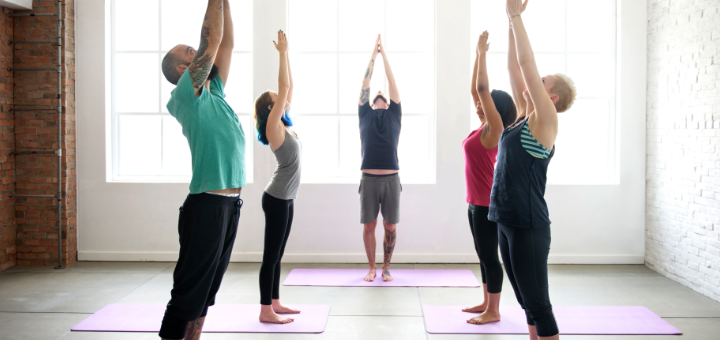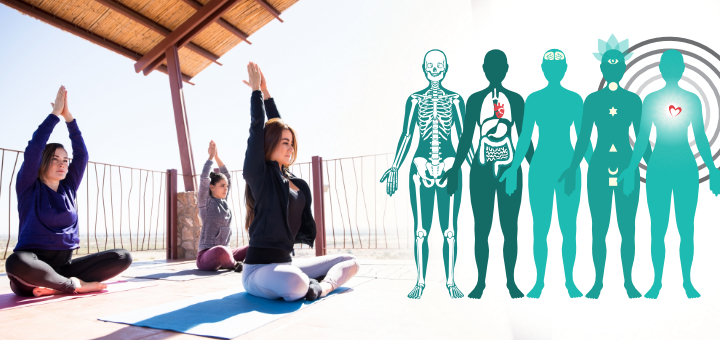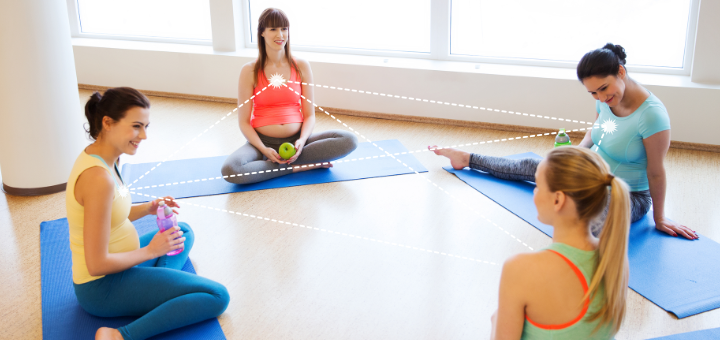How to give your yoga students an experience, rather than “same old, same old” yoga class

A couple of weeks ago, I went to get a massage at a wellness center that I’d never been to before. What struck me the most was how welcoming and considerate everyone was, from the reception staff to my massage therapist. It appeared as if they were doing everything they could to make my experience more enjoyable, and I really appreciated it. As I was lying there on the massage table, I was reflecting on the fact that I was probably the 4th or 5th client of the day for my massage therapist, yet she made it feel as if it was all about me for that hour. To her, my appointment was an everyday routine; to me, it was a rare occurrence that I wanted to get the most out of. And she delivered not only a good massage but a positive overall experience.
I remember being on the other side of that equation when I was teaching multiple yoga classes per day. Sometimes, those classes would start to blend in and begin to resemble one another in content. But then I would remind myself that what was routine to me was “an experience” to my yoga students, who looked forward to those classes and expected to gain something interesting and useful from them. This is where I found that having a specific intention for each one of my classes made the entire experience richer, deeper, and more lasting both for my students and myself. Instead of falling into the trap of “same old, same old”, we got to experiment, investigate, and become more invested in the whole process. Those classes simply became more meaningful.
There can be all sorts of intentions for general yoga classes, and choosing the right one depends on both the teacher and the students. I usually find it helpful to first define for myself a general direction that I want to pursue because it helps to narrow down the options.
You can ask yourself – what do I want to accomplish with my yoga classes? You might want to help your students:
- Develop the body (stretch this, strengthen that, mobilize this, release tension here, etc.);
- Move the energy and affect physiology (using poses as “prana pumps” to pump the energy throughout the body);
- Anchor their attention in the body (to build body awareness, improve concentration, shift from external to internal focus);
- Change their undesirable movement and thinking patterns;
- Open their minds and connect to something greater than themselves.
Those intentions are not mutually exclusive, of course, and you do not have to commit to one at the expense of all others. However, choosing one direction to investigate for some time helps to narrow your focus and make more conscious choices about your class content.
After choosing the general direction (for example, “develop the body”), I like to narrow it further down to a series of classes that I plan to teach. For example, we can focus on the hips and investigate the hips from every angle over several weeks. Or I might choose to focus on the directional movement of the spine and emphasize forward bending, then back bending, then twisting, and so on, over several weeks. I might decide to work on balance and organize several classes around specific balance poses, and so on.
There are three main ways to approach choosing a specific topic for your class(s). You can base it on:
- What your students request individually. You can ask your students about their preferences at the beginning of the class, but it usually only works in smaller groups. In larger classes, you might get too many unrelated requests (one student wants to work on the hips, another one on the neck, another one on the wrists, etc.), or those requests might be too narrow (for example, the infamous “stretch the hamstrings”). And if you choose to work on someone’s requests and ignore the preferences of others, some students might feel neglected.
- What your students need as a group. It can be useful to consider the needs of your students as a group if that group is more clearly defined. For example, if you teach a class at the gym downtown during lunch break, it will most likely attract office workers from the surrounding areas. Then, it would be useful to use your class to counteract the physical stress from sitting, recharge their energy, and address mental fatigue. In that case, the principles will be the same as designing a class for a specific population.
- What you are interested in at the moment. Most yoga teachers I know are constantly studying different aspects of yoga both in the form of continuing education or their own home yoga practice. Those are the best places to draw your inspiration from. When you investigate something new and invite your yoga students to follow along, you will get a variety of responses to the same practice, which will show you the range of human experience. Students will react differently to the same pose or breathing practice or will react in a way that you don’t expect, and both scenarios will enrich your knowledge as a yoga professional. I remember at one point in the past, I designed this clever, elegant yoga practice that involved resting and breathing in several deep forward bends. It felt great to me, but once I taught it to my class, several people reported feeling lightheaded, which was not the experience I was shooting for. That was a very useful piece of information that helped me modify the practice and get a different response next time.
Another important point that we sometimes forget is that if you want to really remember and absorb any piece of information, you have to study it, practice it, and then teach it. This applies to any element of the yoga practice you might teach – yoga poses, breathing practices, points of focus, ideas, chants, yoga sutras, and so on. Once you study it – practice it – teach it (a few times), it is much more likely to take root in your experience and give you a better understanding of what it is meant to accomplish.
These are some general strategies that can inform your decision on what to teach your students in general yoga classes.

You can use the Panchamaya Model to envision different kinds of practices for your students. It can spark your creativity and encourage new exploration.









I need to come here more often. Thank you for what you offer. Do you offer open classes in Portland? Would love to take one of your classes or maybe you would be offering a workshop? I teach yoga also, altho, on sabbatical currently for myself which has been slow going. I need a deep dive but not rich. You are a very solid trainer and I appreciate that.
Hi Myra, thank your your comment! I do not teach ongoing classes in Portland, and currently I do not have any workshops scheduled, but I am planning to do something in the future. What kind of topics would most interesting to you in a workshop?
Dear Olga,
I’ve been popping in to your website for awhile now, and I want to share with you that I find your work extremely valuable. I’m so thankful to have you and your experience as a resource. Thank you for what you do, and thank you for sharing it.
All bests,
Amy
thecatholicyogi.com
Thank you Amy, it’s wonderful to hear! And looks like you are doing great work yourself – I love to see yoga being integrated with other spiritual traditions for students who find it valuable. Thank you for YOUR work!
I appreciate your blogs and wish they could be printed out without all the ads!
It wastes a lot of ink and paper … instead of just having your well-written and intelligent articles!
Thank you for your feedback Renate! I haven’t figured out a way to make printing easier from the technical standpoint yet – all the tools I tried in the past seem to have some shortcomings. But I will keep looking!
This is very helpful. Study it, practice it, then teach it!